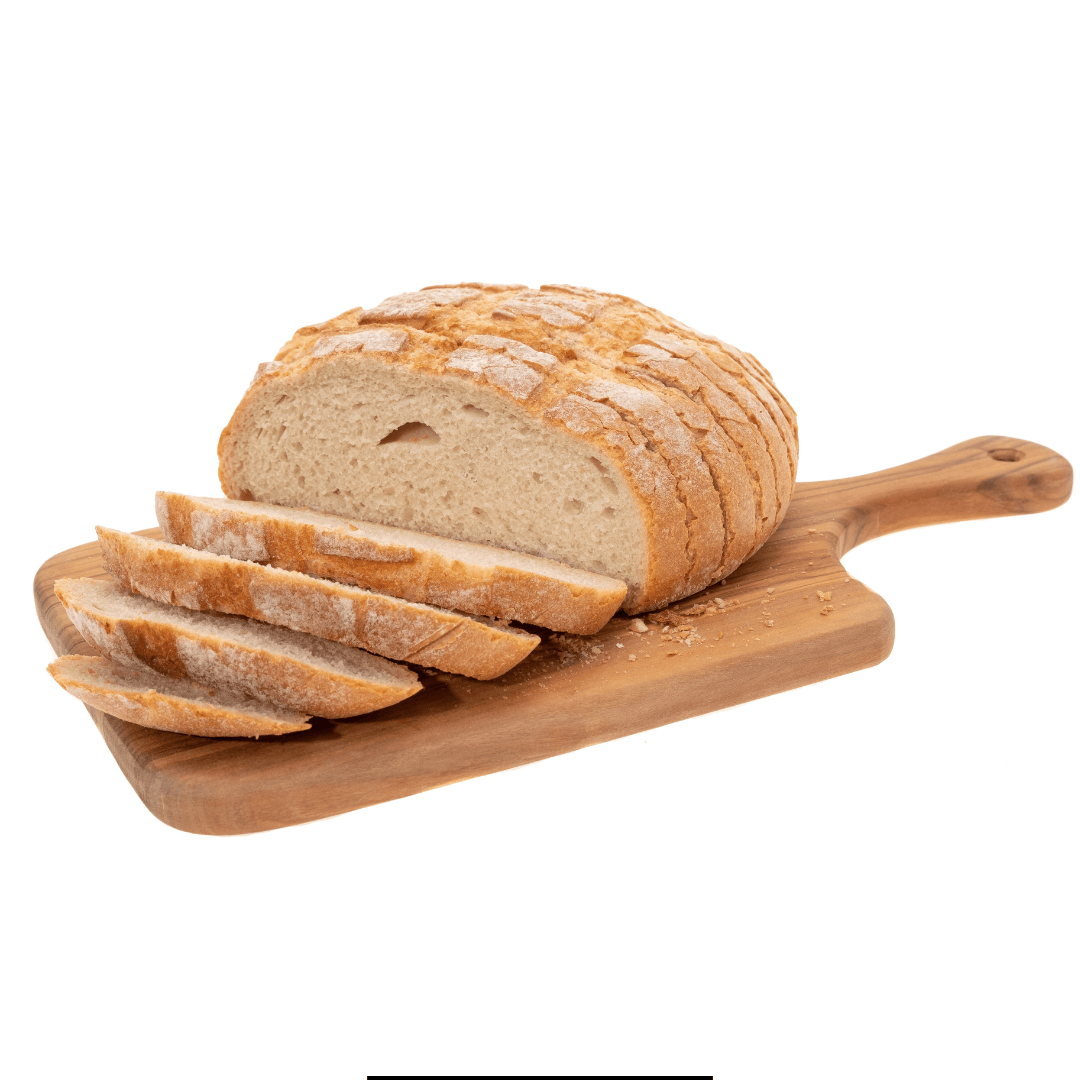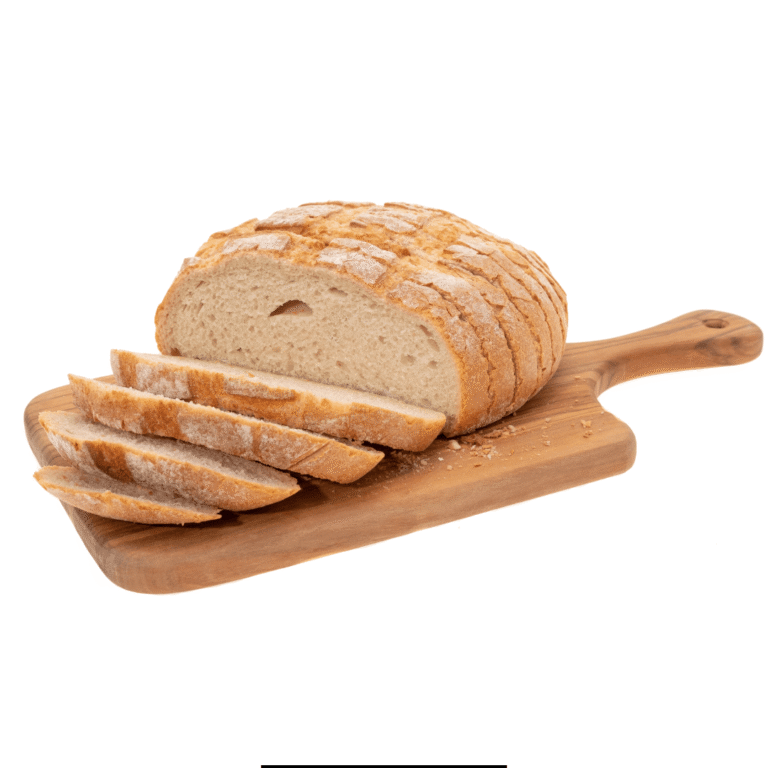If you’ve ever strolled through the aisles of Trader Joe’s, you’ve probably been tempted by their array of delicious breads. Among these, the Trader Joe’s Sourdough Bread is a favorite for many, including myself. It carries that distinctive tang and chewy texture that sourdough enthusiasts rave about. But what if you could recreate this bakery-quality bread in the comfort of your kitchen?
How to make Trader Joe’s Sourdough Bread
Trader Joe’s Sourdough Bread is a popular bread product sold at Trader Joe’s grocery stores. It’s known for its tangy flavor, chewy texture, and crisp crust, which are hallmarks of traditional sourdough.
Ingredients
- 1 cup (120 grams) all-purpose flour
- 1 cup (240 ml) lukewarm water
For the bread:
- 1 cup (240 ml) active sourdough starter
- 1 1/2 cups (360 ml) lukewarm water
- 4 cups (480 grams) bread flour
- 1 1/2 teaspoons salt
Instructions
Creating Your Sourdough Starter:
Day 1: Mix the flour and water in a large jar or container until well combined. Cover loosely with a cloth or a lid that’s not sealed and let it sit in a warm place.
Days 2-7: Feed your starter every 24 hours with equal parts of flour and water. By day 5 or so, your starter should be bubbly and ready to use.
Making the Dough:
- Mixing: In a large bowl, combine your active sourdough starter and lukewarm water. Add in the bread flour and salt, mixing until a rough dough forms.
- Autolyse: Let the mixture sit for about 30 minutes; this process hydrates the flour and aids gluten development.
- Kneading: Transfer the dough to a floured surface and knead it until it’s smooth and elastic. This could take about 10-15 minutes. Alternatively, use a mixer with a dough hook.
- Bulk Fermentation: Place your dough in a lightly oiled bowl, cover it with a damp cloth, and let it rise until it doubles in size. This can take anywhere from 4 to 12 hours, depending on the temperature of your kitchen and the activity of your starter.
- Shaping: Once it has doubled, gently turn the dough out onto a floured surface and shape it into a boule or whatever shape you prefer. Be careful not to deflate it too much.
- Second Rise: Place your shaped dough into a well-floured proofing basket or on a kitchen towel, seam side up. Cover and let it rise for another 2-4 hours or until it’s puffy but not quite doubled in size.
- Preheat and Score: About 30 minutes before you think your loaf is ready, preheat your oven to 450°F (230°C) with a Dutch oven inside. Once preheated and the dough is ready, carefully flip your loaf into the hot Dutch oven, score it with a sharp blade or razor, cover it, and return it to the oven.
- Bake: Bake covered for 20 minutes, then remove the lid and bake for an additional 20-30 minutes until the bread is golden brown and sounds hollow when tapped.
- Cooling: Remove the bread from the Dutch oven and let it cool on a wire rack for at least an hour before slicing.
Tips
- The Float Test: To check if your sourdough starter is ready, drop a spoonful into a bowl of water; if it floats, it’s ready.
- Maintaining Temperature: Sourdough likes a warm environment. If your kitchen is cool, find a warmer spot to aid fermentation.
- Scoring: Scoring the top of your loaf right before baking will help guide the bread to rise predictably in the oven.
- Steam: Baking your loaf covered for the first 20 minutes traps steam inside, helping develop a beautiful crust.
- Patience is Key: Sourdough doesn’t like to be rushed. Let the natural yeasts do their work.
What to serve with
Trader Joe’s Sourdough Bread, with its distinctively tangy flavor and delightful crunch, is an incredibly versatile bread that can beautifully accompany a range of dishes or stand out on its merit.
1. Classic Avocado Toast
Ingredients: Ripe avocado, lime juice, red pepper flakes, salt, pepper, and optional toppings like radishes, eggs, or cherry tomatoes.
Preparation: Mash the avocado with lime juice, salt, and pepper. Spread generously over toasted sourdough slices. Top with red pepper flakes and any other preferred toppings for added texture and flavor.
2. Hearty Garlic Bread
Ingredients: Butter, garlic, parsley, grated Parmesan cheese.
Preparation: Mix softened butter with minced garlic, chopped parsley, and Parmesan. Spread over the sourdough slices and broil until golden and bubbly. This dish is perfect with pasta or as a standout side dish.
3. Soup Companion
Pairs Well With: Tomato soup, clam chowder, or any creamy soup.
Preparation: Simply toast or grill slices of sourdough to achieve a crispy exterior. Serve alongside your favorite soup for a comforting meal. The bread’s crunch and tanginess cut through the richness of creamy soups beautifully.
4. Gourmet Grilled Cheese
Ingredients: Your choice of cheeses (Gruyere, Cheddar, and Havarti work well), tomato slices, and a smear of Dijon mustard.
Preparation: Construct your sandwich with cheese (and tomato slices if you like) between two slices of sourdough. Grill on a skillet with butter until the bread is toasted and the cheese has melted. The sourdough adds a complex flavor that enhances the gooeyness of the melted cheese.
5. Savory Bruschetta
Ingredients: Diced tomatoes, basil, garlic, olive oil, balsamic vinegar, salt, and pepper.
Preparation: Toss together tomatoes, chopped basil, minced garlic, olive oil, balsamic vinegar, salt, and pepper. Heap onto slices of toasted sourdough. This Italian appetizer is fresh, simple, and lets the flavors of quality ingredients shine.
6. French Toast
Ingredients: Eggs, milk (or a milk substitute), vanilla extract, cinnamon.
Preparation: Soak slices of sourdough in a mixture of beaten eggs, milk, vanilla, and cinnamon. Fry in a buttered pan until golden brown on each side. Serve with maple syrup or honey and fresh berries. The sourdough’s texture and slight tang offer a unique take on this sweet breakfast classic.
7. Cheese and Charcuterie Board
Pairs Well With: Various cheeses, cured meats, nuts, fruits, and spreads.
Preparation: No preparation is needed for the bread itself—simply slice your sourdough and arrange it on your board. It’s the perfect vehicle for all the other flavors on your cheeseboard, from creamy bries to sharp cheddars and savory meats.
Ingredients Substitutes
Trader Joe’s Sourdough Bread is known for its unique flavor and rustic texture. If you’re looking to make a homemade version or simply adapt a sourdough bread recipe by substituting some of the common ingredients for various reasons like dietary restrictions or availability, here are some substitutions you can consider:
Wheat Flour Alternatives
- Whole Wheat Flour: For a heartier, fiber-rich bread, you can substitute whole wheat flour for some or all of the white flour commonly used in sourdough recipes. This will yield a denser loaf with a more pronounced wheat taste.
- Gluten-Free Flour Mixes: To make gluten-free sourdough, replace the wheat flour with a gluten-free blend designed for bread baking. You may need to add xanthan gum or psyllium husk to help the dough hold together without gluten.
- Spelt Flour: Spelt flour can be used for a slightly nuttier flavor and is sometimes tolerated better by those who are sensitive to wheat.
- Rye Flour: Partially substituting rye flour will add a deeper flavor complexity to your sourdough bread, but too much can make the dough stickier and more challenging to work with.
Starter Culture Alternatives
- Gluten-Free Sourdough Starter: For those with gluten intolerance, you can cultivate a gluten-free sourdough starter using gluten-free flour and water following the same principles as a traditional wheat-based starter.
- Commercial Yeast: If you don’t have a sourdough starter on hand, you can use commercial yeast as a leavening agent. Although this won’t fully replicate the unique sourdough flavor, it can be an accessible alternative.
Water Substitutes
- Filtered Water: If your tap water is heavily chlorinated or has a strong taste, using filtered water can improve the taste of your sourdough bread.
- Bottled Spring Water: Similar to filtered water, bottled spring water can be used if your tap water isn’t ideal for bread-making due to additives or flavor.
Salt Alternatives
- Sea Salt: Sea salt can replace table salt for a potentially better flavor and trace minerals, though any difference in taste is often very subtle. Be mindful of the grain size; you might need to adjust the amount slightly.
- Himalayan Pink Salt: Like sea salt, pink salt offers a mineral-rich alternative to table salt. Its color can add eye appeal, but it should be used in the same quantities as regular salt.
Sugar Alternatives
- Honey or Maple Syrup: While sourdough recipes typically don’t include sugar, if your recipe does or you want to add a hint of sweetness, using a natural sweetener like honey or maple syrup can work well. Just be aware they can also affect the moisture level of the dough.
Final Thoughts
Regardless of how you choose to serve your Trader Joe’s sourdough bread, the key is to enjoy the process of preparing it and the pleasure of sharing it with others.
More Trader Joe’s Recipes:

Ingredients
- 1 cup (120 grams) all-purpose flour
- 1 cup (240 ml) lukewarm water
For the bread:
- 1 cup (240 ml) active sourdough starter
- 1 1/2 cups (360 ml) lukewarm water
- 4 cups (480 grams) bread flour
- 1 1/2 teaspoons salt
Instructions
Creating Your Sourdough Starter:
Day 1: Mix the flour and water in a large jar or container until well combined. Cover loosely with a cloth or a lid that's not sealed and let it sit in a warm place.
Days 2-7: Feed your starter every 24 hours with equal parts of flour and water. By day 5 or so, your starter should be bubbly and ready to use.
Making the Dough:
- Mixing: In a large bowl, combine your active sourdough starter and lukewarm water. Add in the bread flour and salt, mixing until a rough dough forms.
- Autolyse: Let the mixture sit for about 30 minutes; this process hydrates the flour and aids gluten development.
- Kneading: Transfer the dough to a floured surface and knead it until it's smooth and elastic. This could take about 10-15 minutes. Alternatively, use a mixer with a dough hook.
- Bulk Fermentation: Place your dough in a lightly oiled bowl, cover it with a damp cloth, and let it rise until it doubles in size. This can take anywhere from 4 to 12 hours, depending on the temperature of your kitchen and the activity of your starter.
- Shaping: Once it has doubled, gently turn the dough out onto a floured surface and shape it into a boule or whatever shape you prefer. Be careful not to deflate it too much.
- Second Rise: Place your shaped dough into a well-floured proofing basket or on a kitchen towel, seam side up. Cover and let it rise for another 2-4 hours or until it's puffy but not quite doubled in size.
- Preheat and Score: About 30 minutes before you think your loaf is ready, preheat your oven to 450°F (230°C) with a Dutch oven inside. Once preheated and the dough is ready, carefully flip your loaf into the hot Dutch oven, score it with a sharp blade or razor, cover it, and return it to the oven.
- Bake: Bake covered for 20 minutes, then remove the lid and bake for an additional 20-30 minutes until the bread is golden brown and sounds hollow when tapped.
- Cooling: Remove the bread from the Dutch oven and let it cool on a wire rack for at least an hour before slicing.










